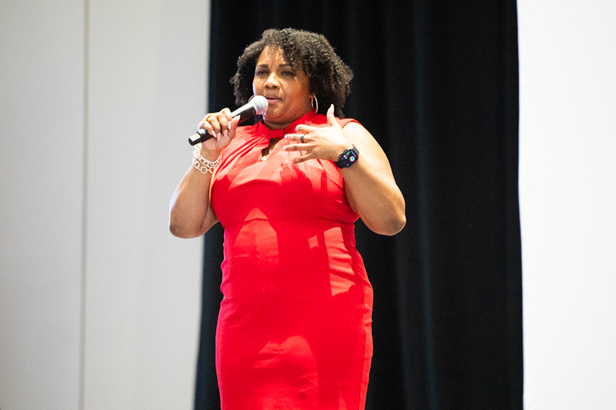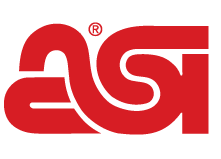Strategy July 23, 2025
ASI Chicago 2025: Strategies To Influence People (in a Good Way)
Education Day speaker Mimi Brown dispelled myths about decision-making and revealed how persuasion is all about trust and connection.
Key Takeaways
• Speaker Mimi Brown emphasized that effective persuasion isn’t about being pushy, but rather about building trust, showing respect and guiding people collaboratively. Influence should feel empowering, not forceful.
• Brown debunked the myth that people make decisions based on facts. Instead, most decisions are emotionally driven and later justified with logic. Understanding this helps sales professionals connect more authentically with clients.
• Brown introduced the E.A.S.Y. framework – Eliminate barriers, Ask clearly, Simplify steps, and design for Yes – to help professionals streamline the decision-making process and make it easier for clients to say yes.
“What mental images come to mind when you think of someone trying to influence you?” asked Mimi Brown in the packed classroom on Education Day of ASI Show Chicago. After informal discussions between the attendees, one of them brought up the idea of someone trying to sell too hard, and the lingering question of “Do I really need this?”

Mimi Brown, AMP Up Success
“That’s what happens when people confuse being pushy with being powerful,” said Brown, a Certified Speaking Professional and the CEO of AMP Up Success. “Real influence isn’t about steamrolling people. It’s about building trust, creating respect and opening doors together, and not shoving your way through it.”
In her session titled “The Power of Persuasion: How To Win Clients & Influence People”, Brown spent 50 minutes engaging the audience, telling illuminating stories and, most importantly, offering a host of actionable strategies that attendees could use to skillfully guide clients and prospects (along with anybody in their lives) to a desirable outcome.
“Influence can be really simple and easy,” she said, “but a lot of times we make it a bit more challenging.”
Brown debunked multiple myths about decision-making. People like to believe they make decisions based on facts. In reality, people buy based on how they feel, and then use logic and facts to rationalize their decision.
In addition, Brown discussed two systems of thinking. System 1 is fast and intuitive (think about braking your car to avoid hitting a squirrel). System 2 is drawn out and considered (solving a complex puzzle or planning an involved project). We like to think that we ponder problems deeply before making a decision, but in reality, we use System 1 thinking 95% of the time.
Accordingly, sales reps and promo people should meet their clients and prospects emotionally and take them where you need them to go. “Influence isn’t about forcing people to think harder,” said Brown. “It’s about aligning with how they naturally think and then guiding them on purpose.”
Anyone can do that with what Brown terms the E.A.S.Y. system, which is broken down into four segments.
E - Eliminate Barriers & Forgetfulness
What process-driven hurdles can be eliminated? DocuSign can be used to speed up signing paperwork. Automated text and email reminders make sure the prospect doesn’t miss the meeting. Include FAQs and one-pagers to eliminate back-and-forth questions which can slow down the process.
A - Ask Clearly
“Don’t beat around the bush,” reminded Brown. Those who don’t ask don’t win the sale. Use powerful-but-purposeful phrasing like “Would you like me to send a sample kit?” or “Can I lock in your order today so we can hit your delivery deadline?”
S - Simplify Steps
Purchasing promo products can be complicated, so don’t try to accomplish everything at once. Narrow the choices down, break the order process into manageable steps (such as narrowing down the event theme before determining the products) and utilizing items like starter packs to give customers a leaping-off point. “A confused mind,” Brown said, “doesn’t buy.”
Y – Yes-Minded Design
Leverage elements that make it easy for the client to say yes, such as one-click reorder links, buttons in emails/web pages that say “Approve,” and visual mock-ups.
Brown finished up by encouraging attendees to be more courageous in their asks, use language that empowers them (instead of minimizing what they do) and employ tactics to forge connections and encourage reciprocity.
“Typically if you have a bigger ask,” she said, “people will give you a bigger yes.”
